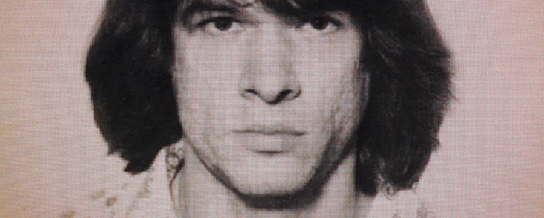Arthur Russell: Cornfields & Disco
The phrase “ahead of its time” was tailor-made for the music of Arthur Russell. A […]

Arthur Russell: Cornfields & Disco
The phrase “ahead of its time” was tailor-made for the music of Arthur Russell. A […]

The phrase “ahead of its time” was tailor-made for the music of Arthur Russell. A classically trained cellist from Oskaloosa, Iowa, Russell moved to New York at age 21 in the early ’70s, and took the city’s avant-garde, rock, and disco scenes by storm. By day he was the music director at experimental art space The Kitchen; at night he produced disco classics like “Is It All Over My Face” and “Go Bang” under the names Loose Joints and Dinosaur L. He bridged the art and disco worlds with his avant-pop compositions under his own name. However, when he died of AIDS in the early ’90s, he was still relatively unknown. That changed in 2004, when Soul Jazz and Audika Records released compilations of his work, introducing his music to the likes of Jens Lekman, Electrelane’s Verity Sussman, and 25-year-old filmmaker Matt Wolf, whose new film, Wild Combination: A Portrait of Arthur Russell, examines Russell’s relationship with his music, his Midwestern roots, and his life and death in New York City. We asked Wolf about his own process of discovering Russell.
XLR8R: What made you decide to make this film?
Matt Wolf: A friend of mine in San Francisco recommended Arthur’s records to me, and it was [his] initial description that, even before hearing the music, made me think that this could be an amazing movie. He described [Russell as] this gay disco auteur in farmer-plaid shirts who would ride the Staten Island ferry endlessly, listening to cassette tapes of his own mixes. I wrote Tom Lee, Arthur’s partner, saying, “I’m an experimental filmmaker and I’m interested in doing a non-traditional film scored to Arthur’s music, and I wanted to ask for your permission.” When I heard from Tom, I went to go meet up with him in the same apartment that he once shared with Arthur, and I just really intensely connected with him… The connection that he felt to Arthur seemed so alive and real that, at that moment, it occurred to me that perhaps a biographical film that wasn’t just visually driven or experimental in nature would be possible.
You call your film “a portrait.” What’s your intention there?
Going into the process of making this film, I knew that there were a lot of conventions, and even traps, of the biographical genre and also the music-film documentary genre. I wanted to avoid some of those traps and also try to think of new creative strategies to deal with the posthumous biography of the under-recognized artist. There were a lot of challenges, particularly the lack of material of Arthur or any recorded image of him speaking, so I knew that I would have to take an unconventional approach. In doing so, I didn’t set out to make a definitive documentary that interviewed every collaborator…. And I also chose to focus really extensively on his relationship with Tom and with his parents and the meaning of the landscape of Iowa in his life and his work–and the kind of iconography of New York City and water. All of these choices, I think, make the film much more of a portrait than ‘The Arthur Russell Documentary’ or ‘The Life and Work of Arthur Russell.’
Is it hard to make a film about someone who’s dead?
In terms of who gets to tell parts of his story, I chose people with a certain kind of empathy for Arthur and I think that’s a big reason I rely upon Tom to tell a lot of the story–a lot of this is Tom’s story. It’s really difficult because there’s a lot of moments where I definitely–in a visceral way–reckon with the death of Arthur. Through the process of making a film, you objectify the material and you objectify the person so intensely, but there are these bursts or moments where you just reckon with the reality that this person died and how intensely it affected the people you’re working with.
Aside from Tom and his parents supporting him financially, how did Arthur stay afloat while he was playing music?
There’s this article about Arthur from the ’80s that talks about Arthur’s style of being an entrepreneur, and it’s extremely telling of Arthur… There’s this anecdote about him, in the ’70s or ’80s in the East Village, selling t-shirts on a rack for like 25 or 50 cents each. Then a few years later, like, everybody in the East Village on St. Mark’s Street was selling [the same shirts] for $10. I felt like that was an incredible allegory for Arthur’s struggle.
Wild Combination: A Portrait of Arthur Russell will begin screening at festivals in the spring.

